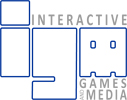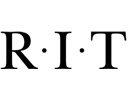Hobbies
Hiking & Biking
Drums
Music
I did some recording with Cornell students for a variety of projects/performances:
Fierro Final Mix
Logic
Sample04
Fierro Final Mix
Logic
Sample04
Recipes
Coming Soon...
Puzzles
Download File or read below
How to preserve and frame a puzzle by DIS V0.1 (hasn't been proofread, so use at your own risk)
Supplies: 1) Frame - puzzles tend to within standard sizes 16x20,18x24,22x28,24x36 - a good source is "framed art" sold everywhere - try KMart, Walmart, and craft shops - aim for $10-$20 (sales) - BUY GLASS. YOU WILL REGRET PLASTIC. - Go for broke and buy "non-glare" glass...has a phenomenal look if you can afford it 2) Glue - Milton Bradley Puzzle Preserver (toy stores, Walmart, Target) (avoid shiny finishes) - Elmer's Glue or Rubber Cement (for backing) 3) Wax Paper 4) Posterboard - comes in 22x28, perfect size - beware not all "blacks" are "black" (but black is recommended backing) - go for broke, and get colored styrofoam backing.... - some places will even "heat seal" your artwork to form board...not too expensive and prevents warpign problems (But I haven't tried myself, yet) - can also go for customized frame or matting to get "perfect" fit, but much more expensive 5) Framing Equipment - light to medium picture wire - eyehooks or hangers - wall hangers and nails 6) Paper towels Tools: - hammer - screwdrivers (philips and slotted) - wire cutters - pliers - large nail (to start eyehooks) - utility knife - scissors (you never know) - metal edge/ruler (to cut poster board along) - ruler - glass cleaner (and paper towels) - paint scraper (in case of price tags on frames) - pencils - phone books, textbooks, or anything big, flat and heavy Steps: 1) Do puzzle - complete puzzle on posterboard for easy transport - if you did on just table surface, well, put it on the posterboard! (might have to reassemble in various portions) 2) Glue puzzle - clear large area - lay down overlapping sheets of wax paper larger than the puzzle surface - turn puzzle upside down (Why? you can glue the picture side, but the corners and edges curl UP after the glue dries...better to have the center push up against the glass) - press the puzzle between sheets of posterboard or cardboard (from frame backing) - quickly turn upside-down - slide onto waxpaper - dust off puzzle dust and other assorted crumbs - spread glue in even amounts - cover the entire surface - allow glue to seep into cracks, but don't apply TOO thickly - let dry a few hours 3) Optional: - flatten puzzle with weights - as long as you glued the puzzle upside down, this step is unnecessary back - the shape \_____/ is condusive to framing front 4) Preparation: - peel off wax paper - trim edges if glue seeped - clean/wipe picture surface with dry paper towels - check for globs of dried glue on the surface - peel them off - take out backing from frame (if haven't done so yet) - pry up staples or points wiht screwdrive - be careful not to pull out staples - you might need to add some yourself - set frame aside - you might wish to clean the inside with glass cleaner and towels - beware of specks and dust...forever will they bug you - cut posterboard to frame size - I usually measure with the backing board, but that's not always a great fit - cut posterboard - test inside frame - test puzzle inside frame - often puzzles are LARGER than indicated size - you might need to trim down the edge or opt for a larger frame - trimming a puzzle edge requires a VERY sharp utility knife! 5) Glue backing: - measure puzzle such that it's centered inside the posterboard - I usually eyeball it and then adjust after gluing - better to lightly pencil the edges just under the puzzle - glue puzzle to posterboard - if you measured and marked the posterboard, apply a thin coat everywhere - avoid getting too close to the edges to avoid oozing - if you didn't measure, apply to the puzzle - LIGHTLY place the puzzle - very quickly check all edges and corners - adjust the puzzle by gently sliding - slide too far and glue will ooze and streak - when satisfied push down from the center and smooth outwards - you may wish to lay heavy objects all over the surface and leave overnight - I have had success going directly to the frame 6) Matting (optional) - this will improve the look even more so - beware that the puzzle adds thickness - make sure frames can handle mattes and puzzle and backings - I have no idea how to do this! I say scrap it...posterboard is good enough 6) Framing - careful blow out any specks from the glass - clean glass again if necessary - place puzzle inside frame - beware of "up" and "down" if the frame is not symmetric - take care not to pull up the edges - place frame backing on top - push down a couple of staples/point - careful look at the picture side - does everything look ok? are there any specks of dust? - push points and staples down...for a tight fit use a flat screwdriver 7) Hanging - determine "up" and "down" sides - turn frame over - on the back side, measure 1/4 to 1/3 down - measure a reasonable distance and mark for an eyehook/eyelet - tap a hole with a large nail - screw in the eyehook - on the opposite side, measure the same distance and repeat the process - twist hanging wire through one side...give about 1-2 inches of extra length and twirl the extra wire up the main wire - leave enough wire between the eyehooks so that they "give" 1-2 inches but not so much that the wire goes above the top of the frame - twirl the wire tight on the other eyehook - be sure to leave 1-2 in extra length to twirl 8) Pick a cool spot on the wall - tap in wall hanger 9) Place frame - level frame - stand back and enjoy! Congratulations!


